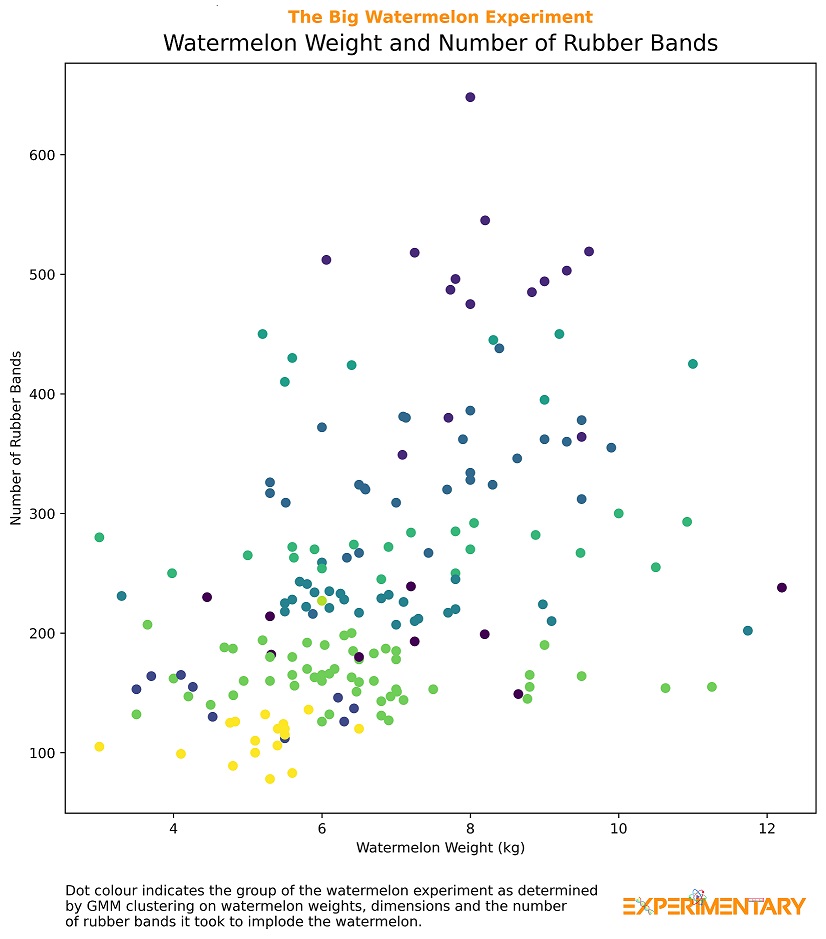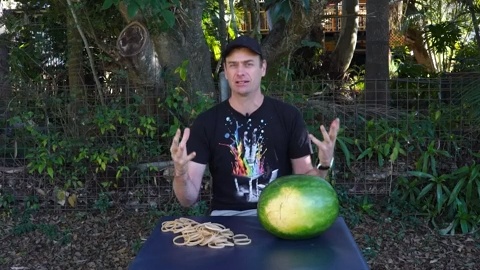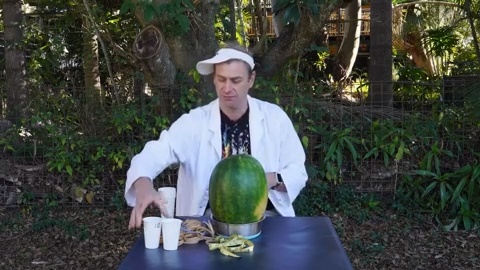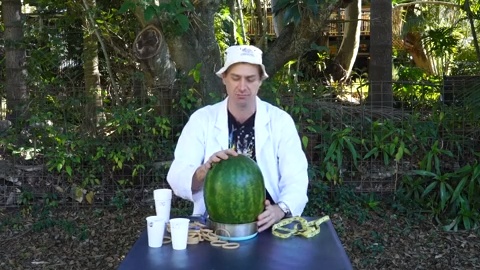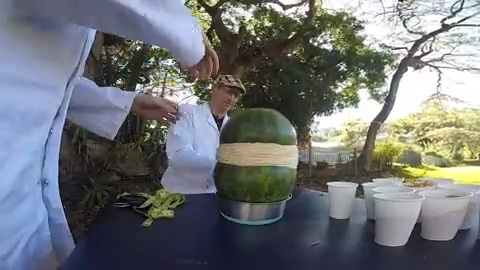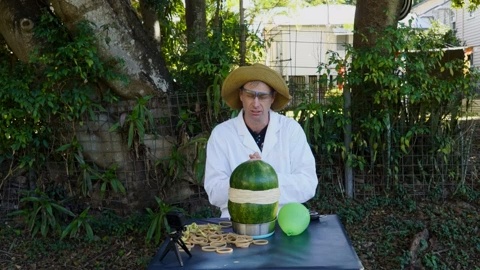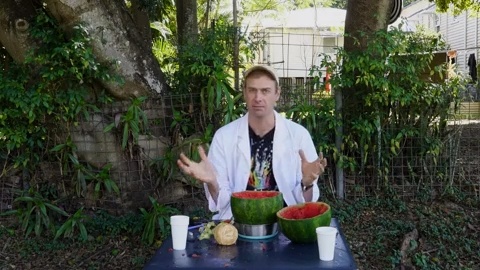The Big Watermelon Experiment 2
Everything you need to know
Step one in the Big Watermelon Experiment 2 is to register your school on the main page. This helps us keep track of how many melons we can expect to be imploded, and to send you any updates/results.
Exactly how, and at what pace, you move through the rest of the stages below is up to you.
Lesson Quick Access
Jump ahead to a lesson
Lesson One – Get Ready…
This is all about getting your heads around what is coming up. There is a little background information (and science) in “Meet the Ingredients”, which explores watermelons and latex rubber bands. There’s also “Getting All Set” which tells you everything you’ll need to think about (and get) for the big implosion day.
Resources
Videos
Video One – Meet The Ingredients
Video Two – Getting All Set
Lesson Two – Get Set…
Here you’ll find “Teacher’s Tips”, which is pretty self-explanatory. It gives a few insights into things that will make the event run smoothly and help you get the most out of it all.
Videos
Video Three – Teacher Tips
Lesson Three – Go!
Suggested Timing is during National Science Week – August 14th to the 22nd
The “Implosion Time” video is all about doing the experiment, whereas the “Forces and Flying Fruit” video is all about the forces at play.
The accompanying Forces and Implosions fact sheet has some higher level maths (such as volumes and densities), and even a small companion experiment designed to measure the stretchiness of your rubber bands (scientifically known as the force constant).
Videos
Video Four – Implosion Time
Video Five – Forces and Flying Fruit
Lesson Four – Wrap it up
What does all this have to do with the real world? Find out in the video “Going Supernova”.
There are also a couple of companion fact sheets courtesy of Melons Australia about how to grow a watermelon, and a little Melon Maths (aimed at School Years 5 – 6)
Videos
Video Six – Going Supernova
2021 Experiment Results
Results for 2021 can be uploaded via this Google form. If you have data for many melons you can also send that directly to Dr Rob on a spreadsheet (a template is made available to all participants via email).
The data set will be available for those interested.
2020 Experiment Results
You can use the results from 2020 to help predict the number of bands for your watermelon. Each dot represents one watermelon, its position is based on just the weight of the melon and the number bands it took to implode it (there maybe better things to compare, we’re working on it).
It is important to keep in mind with the below graph that a few schools did use the incorrect rubber bands (this may account for quite a few of those very high numbers).
